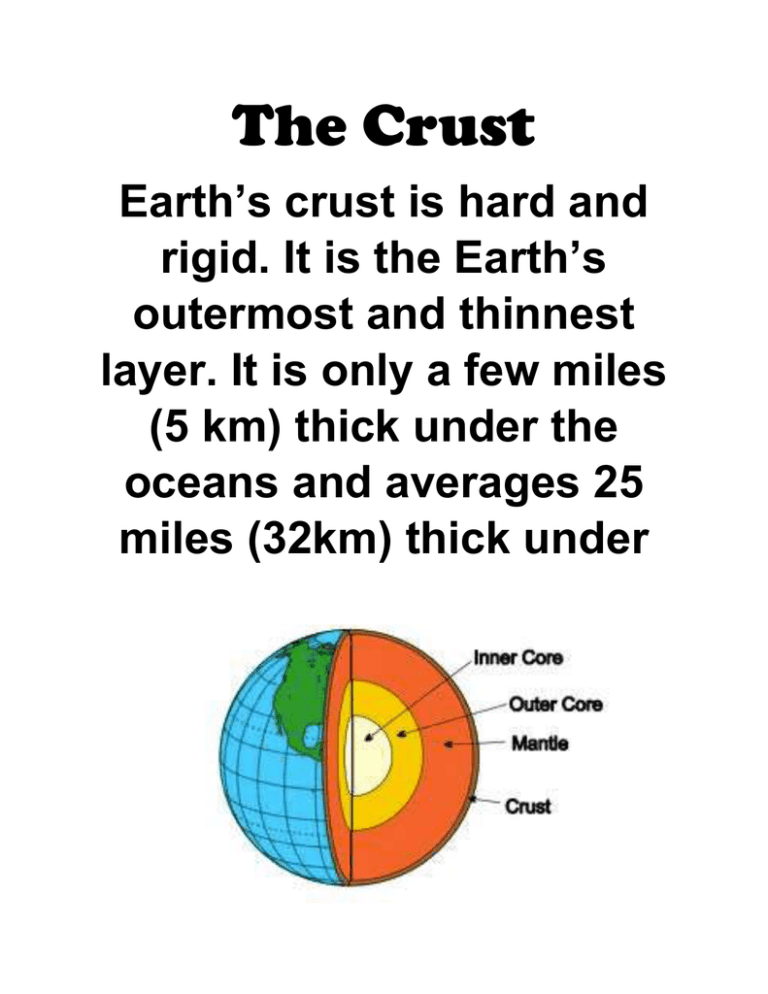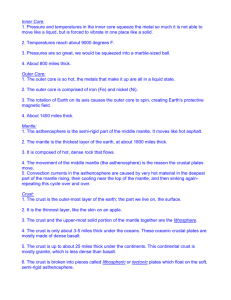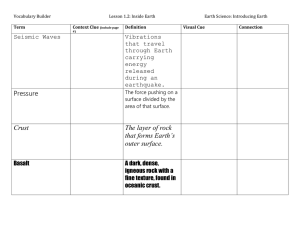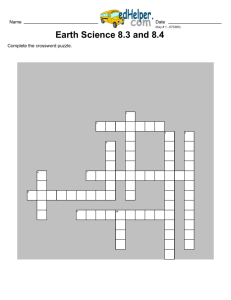The Crust
advertisement

The Crust Earth’s crust is hard and rigid. It is the Earth’s outermost and thinnest layer. It is only a few miles (5 km) thick under the oceans and averages 25 miles (32km) thick under the continents. The Mantle Divided into two sub regions, upper and lower, this dense layer made of hot semi rock is located directly below the crust and is about 1800 miles thick. Here, magma heated by the core becomes HOT and rises. As it reaches the crust it cools slightly, becoming more dense and skinks back to the bottom/core area. This circular motion is a convection current which is believed to be responsible for tectonic plate movement. The Outer Core The outer core is the only liquid layer of the Earth – a sea of mostly iron and nickel. It is roughly 1800 – 3200 miles below the surface and about 1400 miles thick. Temperatures reach 6,000° C. The Inner Core An extremely hot, solid sphere of mostly iron and nickel at the center of the Earth. It is 3200 to 3960 miles below the surface and about 750 miles in diameter. Lithosphere Uppermost solid mantle and the crust. It is brittle and solid and the most rigid of Earth’s layers. It is also the coolest of Earth’s layers (temperature). Asthenosphere Part of the upper mantle located below the crust of the earth. Defined by temperature, and it starts when the crust heats up to 1300° C. At this temperature the crust begins to melt and move more as a liquid. The asthenosphere is important in plate tectonics, as convection currents slowly move the tectonic plates that lie above.





